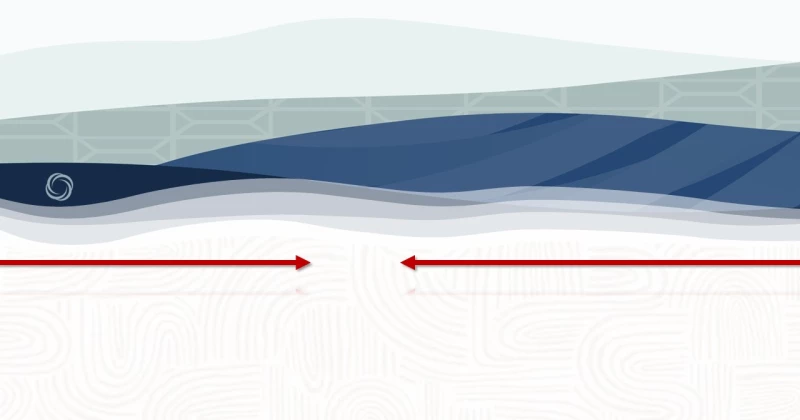The case for scaling the utility workforce
The 2020s have been filled with a number of curve balls for all of us, but the utility sector was particularly impacted. The volatility of the competitive labor market, shifting energy demands and resources, and changes in customer expectations put pressure on the industry overall. The maintenance and/or replacement of the aging infrastructure has become a top priority.
Beyond the occurrence of generational wildfires, hurricanes, and floods alone that have taxed providers significantly, utilities also bear the burden of shifting population epicenters. There are no signs that "normal’" will return anytime soon, and the reality that a migration and relocation in our populous will continue for the foreseeable future is likely assured. Capacity of the existing infrastructure is approaching—or possibly beyond—the tipping point, and today there is no choice but to repair and replace assets to support the new required service capacity. Not only does the increasing frequency of outages inconvenience citizens and businesses, but the current grid reliability challenges could even be compared to supply chain challenges which also loom large. Either of these issues can create rippling consequences, both upstream and downstream, with a single weak point, failure, or gap. The critical nature of this possibility will likely drive increased investment in workforce growth and application of technology to automate processes.
The workforce gap suffered by many utilities in recent history has occurred due to significant labor losses for the utility industry. Organizations are tasked with moving quickly to recruit, train, and retain employees to keep pace with modernization, expansion, and ongoing projects but these same organizations could benefit by applying a modernization and expansion strategy to their workforce technology architectures. This approach could decrease the time required to achieve optimum staffing levels.
Other tactics, including both interest and investment in technologies that improve situational awareness, automate workforce, and task management, and give prescriptive guidance to workers, are definitely worth consideration. It won’t be long until remote expert tools will also become commonplace rather than “innovative.”
As the nature of utility work demands speed and skill real-time communication and collaboration are necessary as well. Front-line, plant, and back-office teams depend on coordinated activities and shared information 24×7 to address tasks such as installing new equipment in response to growth surges or restoring service after an outage. As much as a single information silo could be detrimental preventing decision-makers from making the right call—impacting service availability and reliability, not to mention worker and community safety.
Having direct access to experts will be the only way that new workers can become productive on day one. And having unfettered access to critical information systems will be key to ensuring all utility workers are focused, efficient, and productive from the moment they clock in regardless of where they work on any given day.
Field-based workers properly equipped with mobile devices such as tablets allows speedy confirmation of daily planning, scheduling, and equipment or supply requirements at the start of the shift. Dispatch, routing, and status reports can also be automated throughout the day via GPS tracking and real-time data inputs. GIS access will help ensure crews aren’t spending hours, or even minutes, trying to hunt down the right line or transformer. And a quick barcode scan of the asset can help retrieve maintenance history and manuals so workers can instantly identify repetitive issues, immediately begin the diagnostic, or repair process.
Similarly, plant operators equipped with enterprise-grade mobile computing technologies can maintain round-the-clock visibility into systems status and more effectively analyze generation and demand levels. Should adjustments need to be made to better balance the load during peak periods or scheduled maintenance, they can more easily coordinate with various team members. The ability to instantly review reports from anywhere, dispatch teams to investigate, or guide off-site teams through complex inspection, diagnostic and repair procedures as needed improves efficiency as well. And if all parties have reliable, enterprise-grade mobile devices in hand everyone will be on the same page, reviewing and reacting to the same information at the same time.
At the end of the day, it all boils down to collective knowledge and skillsets. When the lights go out, the last thing anyone wants is for utility workers to be left in the dark.
Of course, knowledge is power. The more information your utilities have about what’s happening with operational technology systems, the better they can manage their performance and preempt issues.
ESC Partners is building smarter communities from utilities work to public works with solutions in the Oracle Cloud. Let us help you take full advantage of all the Oracle SaaS options available or walk you through our personalized Care-as-a-Service (CaaS) solutions. Just send us a note via the contact form, and we'll circle back within 48 hours.
Related Content
-

-

City of Tempe’s Tarja Nummela shines a light on the positives of utility customer service & the power of thank you
Insights directly from a utility on love & care.
-

Is the concept of a smart city … dead? Or has its meaning shifted?
Our COO reveals: while the fantasy is DOA, it's not the end of the story.






